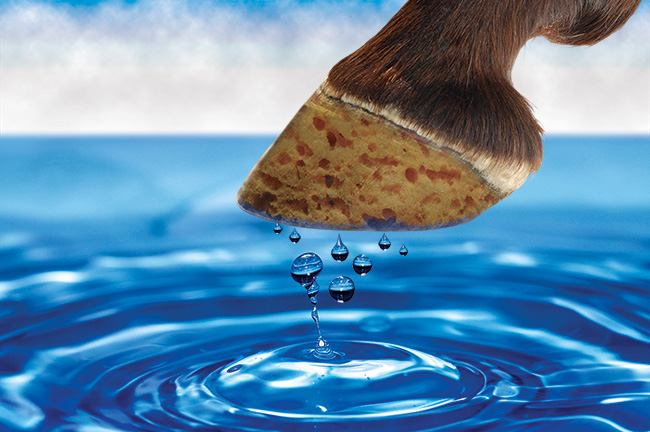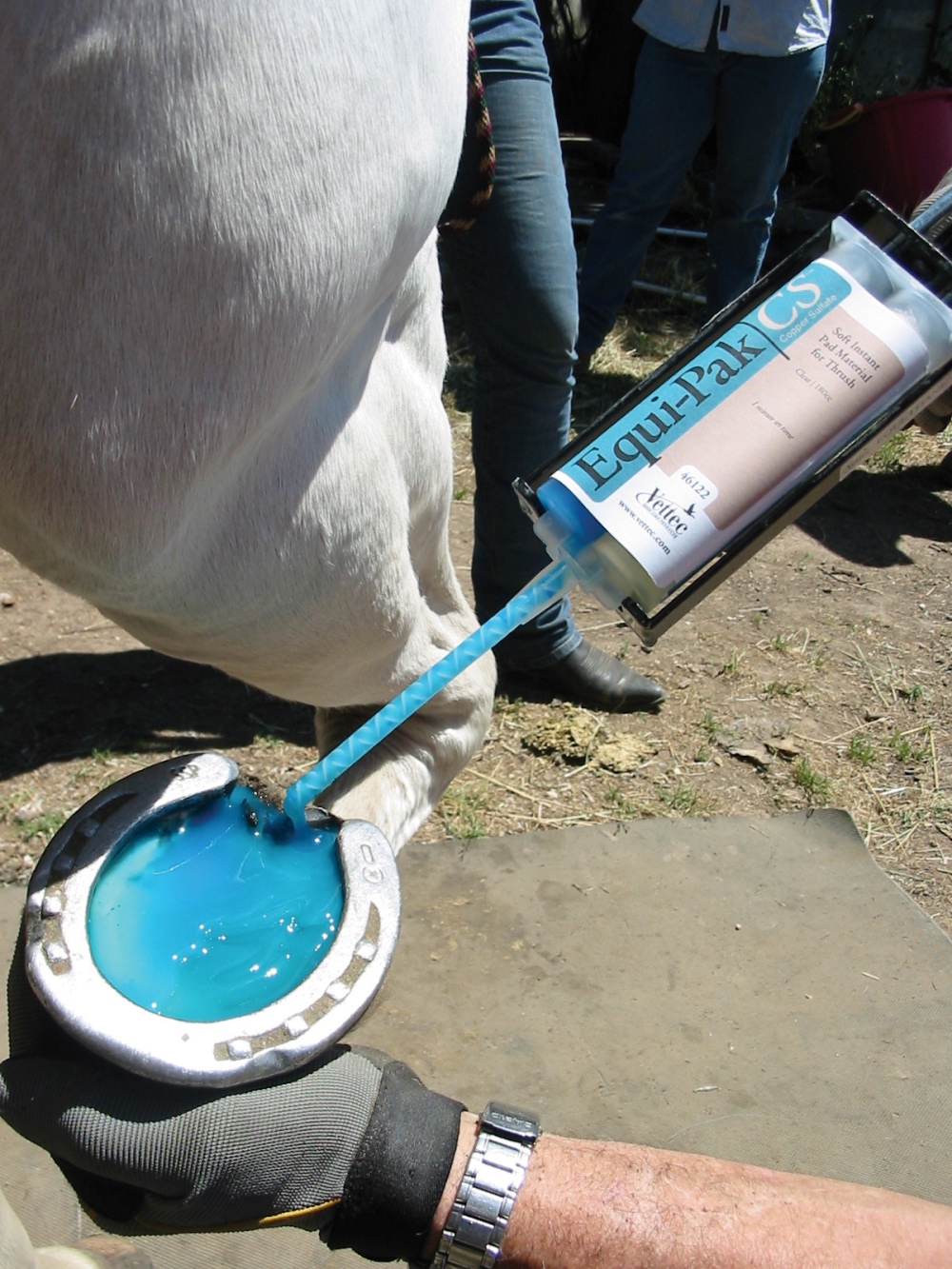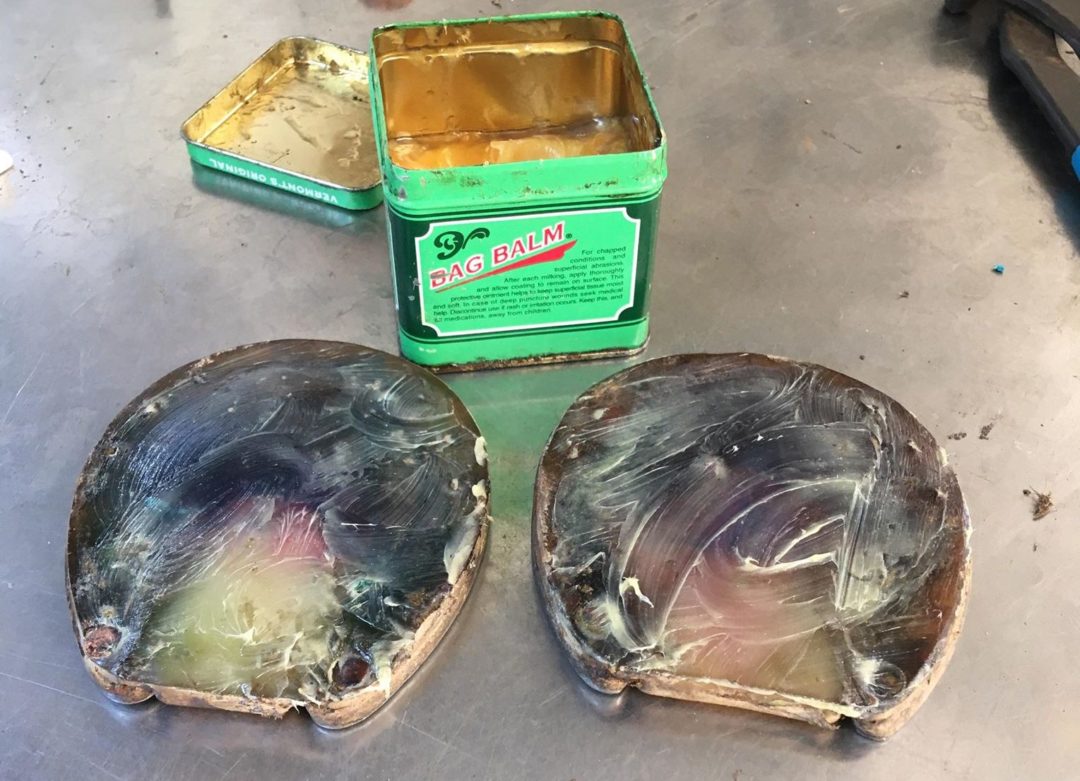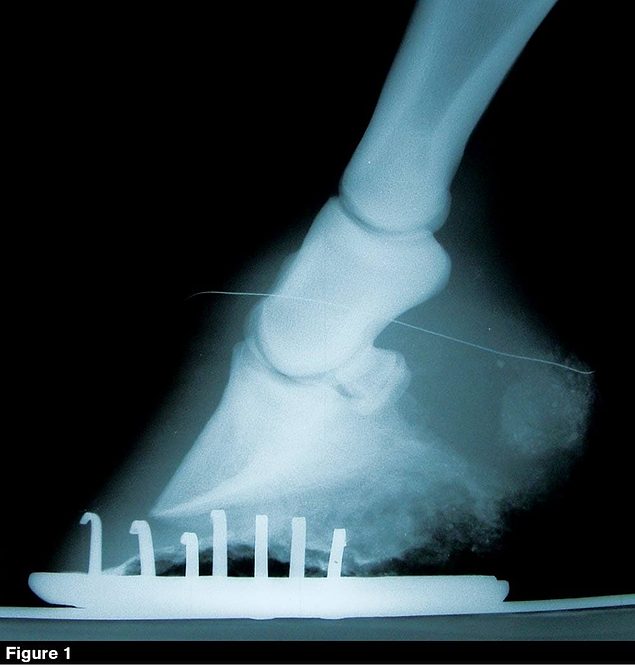The past year has been interesting, to say the least.
While the COVID-19 pandemic has resulted in restrictions in our daily lives, it also has been one of the busiest years within the farrier industry as horse owners spent more time with their mounts. With increased business comes a greater need for hoof-care education. As the year comes to a close, American Farriers Journal editors compiled the articles that you read most from each month in 2020.
1. Think Again Before Trimming a Negative Palmar Angle Foot
This year marks my 55th year of shoeing horses. Techniques have changed several times throughout that career based on subjective evaluation and misleading science. We now live in the age of information (and misinformation), and those who force their opinions on our farriery practices are expanding. Throw in a measure of “how-to” by owners and veterinarians who don’t shoe horses for a living, yet feel the need to tell us how to do it anyway. Fortunately, knowledge will help weed out the stupid stuff.
The autonomy that we should have to practice our craft is based on our experiences, skill and education. Actual decisions of normal hoof-care standards and the necessary techniques to address gait problems or lameness issues mediated by farriery should be left in the hands of the farrier.
Yes, input from other professionals involved with the case should be considered. However, the decision should be left with the farrier because that is the professional who will be the ultimate responsible party for those decisions.
2. Diego Almeida Named New Director of Montana State University Farrier School
 Montana State University Farrier School has lacked a director since Bryce Kawasaki left the program in 2018. To revive its farrier program, the university has named farrier Diego Almeida, AWCF, CJF (EE, FE, TE), as its new director. Almeida officially begins with the farrier school on August 17.
Montana State University Farrier School has lacked a director since Bryce Kawasaki left the program in 2018. To revive its farrier program, the university has named farrier Diego Almeida, AWCF, CJF (EE, FE, TE), as its new director. Almeida officially begins with the farrier school on August 17.
Almeida joins the school after serving as farrier instructor at Midwest Horseshoeing School (MHS), which was acquired by the University of Illinois College of Veterinary Medicine. He also provided farrier services through the university's Middlefork Forge. Almeida is a 2011 graduate of MHS. He is the only American Farrier's Association (AFA) Certified Journeyman Farrier to have earned the association's three endorsements (education, forging and therapeutic). The AFA also named him the J. Scott Simpson Outstanding Educator Award in 2016, 2017 and 2019.
3. Alfalfa and the Insulin Resistant Horse
Alfalfa can be an excellent addition to most horses’ diets, even for those that are insulin resistant (IR).
Equine nutritionist Juliet Getty often recommends feeding it because it boosts the overall protein quality of a grass-hay diet and, in general, enhances the horse’s muscle tone, immune system and overall health. Some people, though, just don’t want to feed alfalfa — they believe it causes laminitis. After years of working with horses, it appears that it may, in fact, lead to laminitis in some horses.
4. Pricing for Trimming and Shoeing | Farriers' Horse Ownership
Nationally, the typical full-time U.S. farrier charges $131.46 for a trim and nailing on four keg shoes while part-time farriers charge an average of $94.49 for the same work.
Some 94% of U.S. farriers are not only involved with the footcare needs of numerous horses, but they and their immediate families also own horses, ride and/or compete in many different events.
5. The Pros and Cons of Top Dressing the Foot

Farriers agree on the definition of top dressing as the practice of rasping the top side of the hoof to remove any flares or other distortions before shaping the shoe and putting it on. Not all agree, though, that it’s the right thing to do.
Chris Broadus, a Shelbyville, Ky., farrier who shoes Thoroughbred horses, says he caught a lot of flak about a year ago when he posted on a farriers’ social media site that he doesn’t top dress his horses’ feet.
“I don’t do that,” he says. “I take out all of the flares and distortions from the bottom, running my rasp around the edge to shape the foot that I want.”
6. The Mystery Of Moisture And The Equine Foot

Farriers in show barns rail against horses that are bathed too often, while shoers in dry, arid areas sometimes ask owners to let water troughs overflow a bit so horses will have to stand in water or mud while drinking, giving their feet a chance to get some moisture. Some hoof coatings are touted for holding in moisture, while others keep it out.
But when scientific tests are used, the results aren’t clear-cut — and they don’t seem to support these commonly held beliefs. Two presenters at the 2013 International Hoof-Care Summit separately noted that the amount of moisture in a hoof doesn’t seem to vary much — no matter what environment the horse lives in.
7. Sugardine — A Stinky, Gooey Mess That Works When Treating Wound Injuries
Sugardine is simply a paste of granulated white sugar and betadine solution or scrub mixed to a toothpaste or peanut butter consistency, and it is a remarkably safe and effective wound dressing.
It’s so simple that people can’t believe that it actually works until they see it firsthand. Then afterward, they can’t believe no one ever taught them about sugardine.
8. What Do Hoof Rings Say About a Horse’s Health?

Stress. Although it is a natural part of life, stress can have a negative effect on health, and not just for humans.
In fact, horses can experience a variety of stressors that impact their health. Sometimes, signs of stress can show up in a horse’s feet as hoof rings. To keep horses happy and healthy, it’s crucial for horse owners to identify stressors that can lead to hoof rings, and provide proper care to hooves when needed.
9. Resetting Pads with Pour-ins is Possible

Do you want to reset more pads?
Marengo, Ill., farrier Vern Powell preps pads before applying them to horses’ feet in hopes of reusing them.
“When we have a horse that requires a pour-in under a pad, we apply a layer of udder balm on the foot surface of the pad,” says the chair of the American Farrier’s Association Cultural Exchange Program. “This prevents the Equi-Pak from sticking to the pad and makes it easier to reset the pad during the next shoeing. Vaseline could also be used to achieve the same effect.”
10. Dealing With Thin-Soled Horses
The sole is the guardian that shields the sensitive structures of the hoof from contact with the outside world. Acting as the primary barrier against ground surface trauma, it is designed to handle concussion naturally; however, it seems that this once efficient protector has become one of the most abused structures of a horse's anatomy.
While the sole itself can grow quickly, it is the formation of callous that creates the necessary cushioning effect and that develops slowly.
Using healthy hooves from domestic horses as the standard, sole thickness normally is about 3/8 inch, with a uniformed callous extending to the underside of the lateral cartilages and the coffin bone.
Seen in a standing horse, a naturally shaped hoof would also have an arch to reflect the coffin bone's position at the front half of the foot, with the lateral cartilages forming the underpinning for the back half. This type of configuration allows for flexibility of movement, which enables the foot to effectively dissipate the shock of impact. And, while a stone bruise can happen as quickly as stepping on a rock, the amount of force placed on a thin-soled foot will have a direct effect on its susceptibility to harmful trauma in general.








Post a comment
Report Abusive Comment